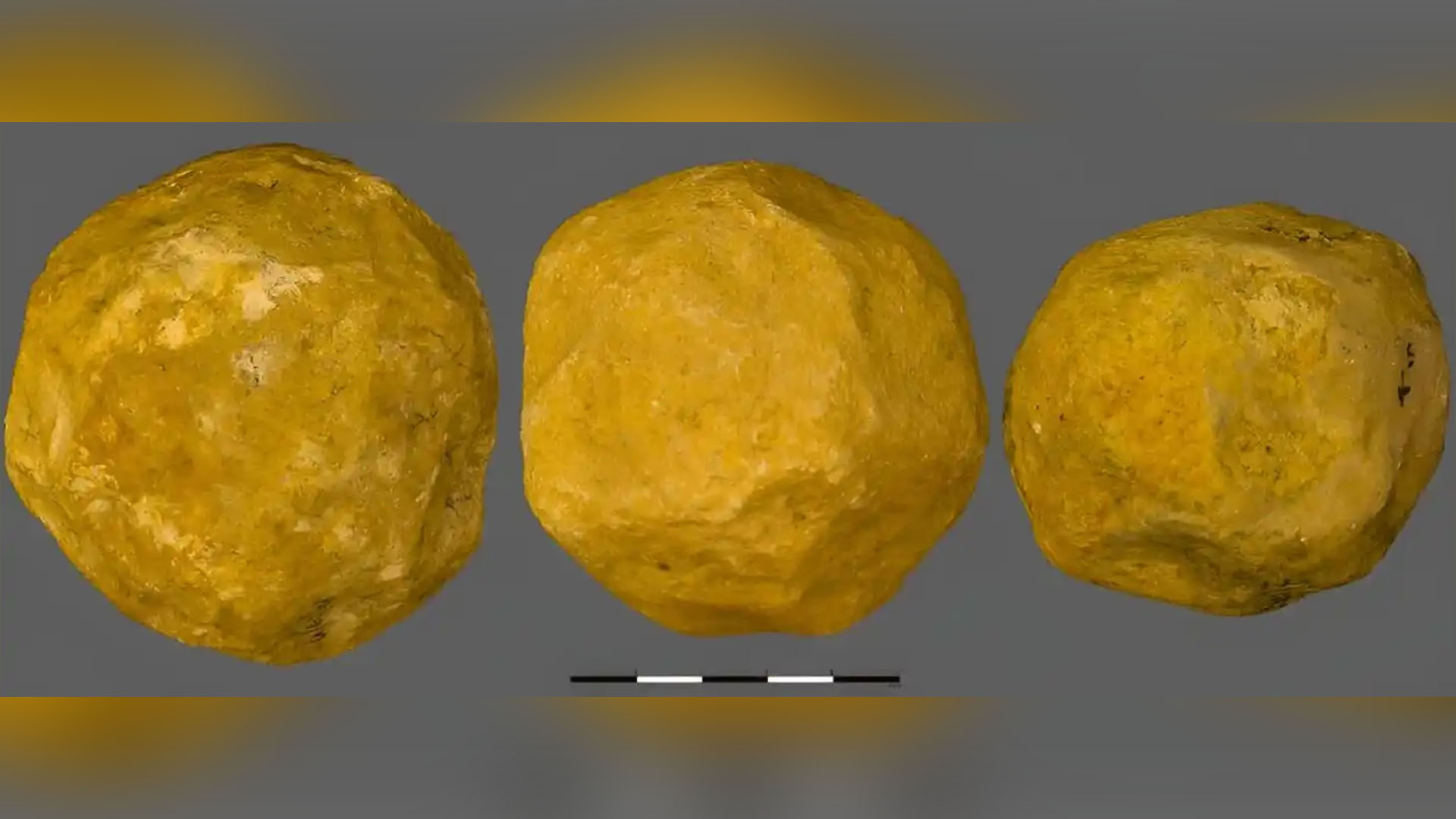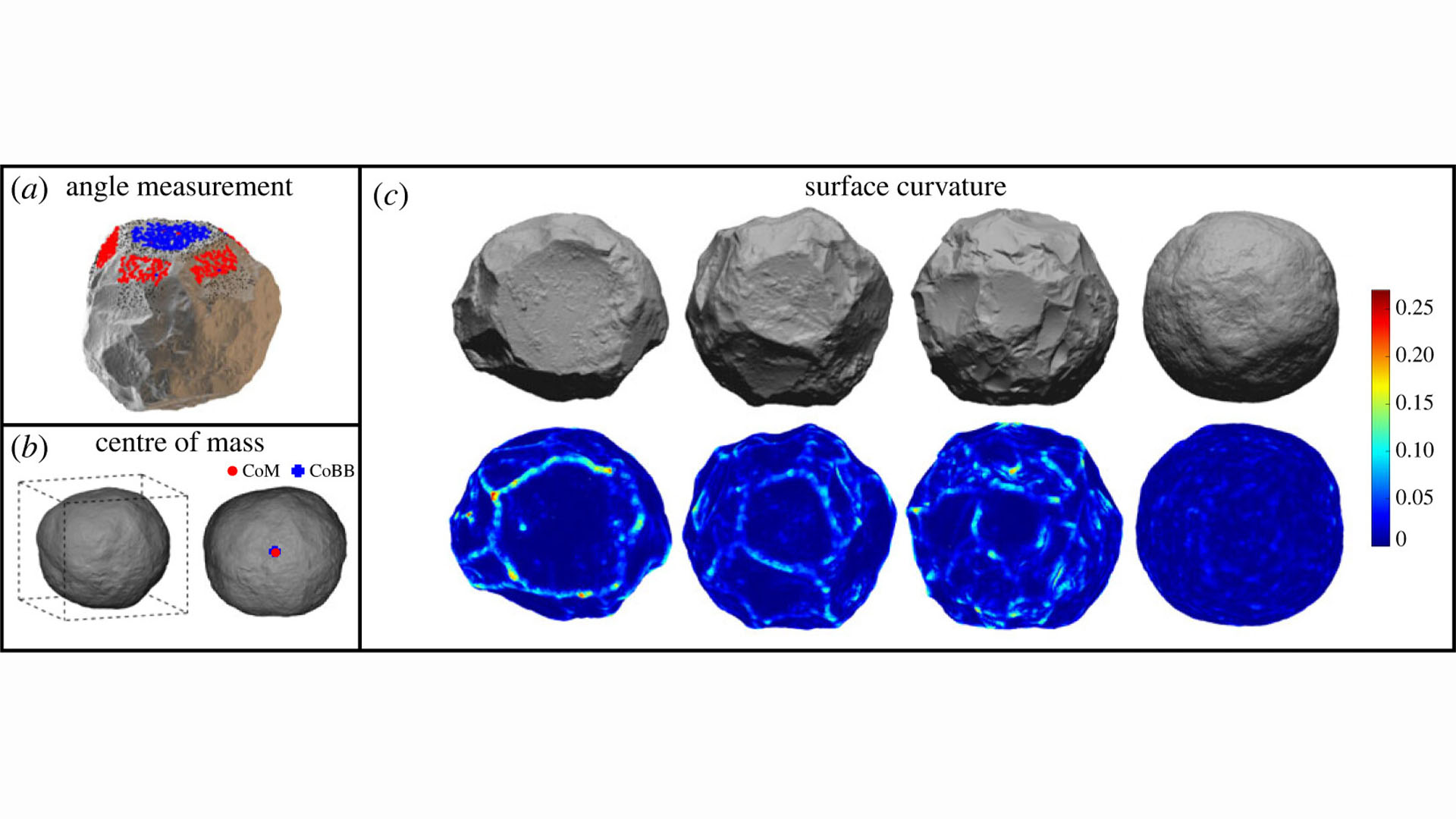Early human relatives purposefully crafted stones into spheres 1.4 million years ago, study claims
The stone spheres were crafted by early hominins who were trying to create symmetry in the objects, a new study suggests.

Around 1.4 million years ago, early human relatives crafted enigmatic stone "spheroids" in the Middle East in deliberate attempts to make perfect spheres, a new study finds.
The finding shows the intention of early hominins, such as Homo erectus, to "impose" a symmetry on the stones — the oldest known evidence of such planning, the researchers suggested.
It's possible these deliberately spherical stones "conferred some sort of functional advantage over naturally rounded stones available in the landscape," study lead author Antoine Muller, an archaeologist at the Hebrew University of Jerusalem, told Live Science in an email. And "their tendency to become more spherical as they are made suggests a preference for symmetry and an appreciation of geometry."
Related: Cave thought to hold unicorn bones actually home to Neanderthal artwork
Mysterious spheroids

Hundreds of stone spheroids, typically made from limestone or sandstone, have been unearthed at archaeological sites in Africa, Asia and Europe. The smallest are just one inch (2.5 centimeters) across, or about the size of a walnut; most are between three inches (8 cm) and four inches (10 cm) across, or about the size of an orange. Many spheroids have been found at stone toolmaking sites, and some other studies suggest they are well-used "hammerstones," perhaps for pounding sharp-edged flakes off other stones, or stones "cores" that flakes had been knocked from.
The earliest spheroids are up to 2 million years old. But they span the entire era of stone toolmaking, and some have been found at Neolithic and later sites that are only a few thousand years old.
Muller and his colleagues examined 150 limestone spheroids unearthed at the 'Ubeidiya archaeological site in northern Israel and dated to about 1.4 million years ago, when Homo erectus was the dominant hominin, according to the study, published Sept. 6 in the journal Royal Society Open Science.
Get the world’s most fascinating discoveries delivered straight to your inbox.
The researchers used mathematical analysis to determine that the spherical shape of some of the objects — which range from rough polyhedrons to near spheres — was deliberate, likely worked on in stages and not accidental.
"We argue that this spherical shape was something they aimed to produce," Muller said. "The ones that were more 'finished' were more spherical, suggesting that this was one attribute they were aiming for."
Symmetry in stone

The researchers noted that earlier studies had seen symmetry in Acheulean bifaces, a type of stone tool dating from up to 1.7 million years ago, and that this was thought to be the earliest evidence of "hominins imposing a geometric shape and symmetry on their stone tools."
But it now seems that the spheroids, which are older, may have had the same purpose — and perhaps other purposes as well.
"If symmetry was desired by knappers of Acheulean handaxes, which are symmetrical in three axes, then spheroids, symmetrical in all directions, also fulfil this need," the researchers wrote.
Muller said the study suggested that early hominins like Homo erectus and the even earlier Homo habilis may have been more cognitively advanced than previously suspected.
"Our findings suggest that the people who made these spheroids could envisage something as abstract as a sphere and impose that conception in reality by shaping a stone," he said. "That likely takes a great deal of forethought and manual dexterity, speaking to their remarkable cognitive and skilful abilities."
Bruce Hardy, a paleoanthropologist at Kenyon College in Ohio who was not involved in the study, said the spheroids may have had an unknown practical purpose that explained their shape.
"One long-standing idea is that these were hammerstones used to knock flakes off a core," he told Live Science. "And if you just keep doing that while rotating the hammerstone around, you're going to end up with something approximating a sphere."
Hardy acknowledged that the new study showed the spheroids became mathematically more spherical as they were worked on, but he said that was not hard evidence that early hominins had deliberately shaped them.
"I think they're capable of it, but I don't know that this analysis really shows that this is what they're doing," he said.
Tom Metcalfe is a freelance journalist and regular Live Science contributor who is based in London in the United Kingdom. Tom writes mainly about science, space, archaeology, the Earth and the oceans. He has also written for the BBC, NBC News, National Geographic, Scientific American, Air & Space, and many others.
